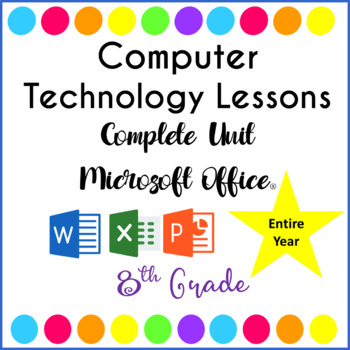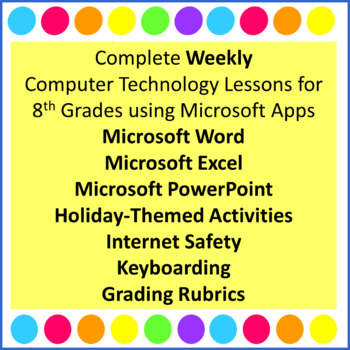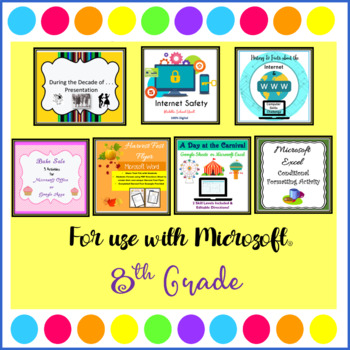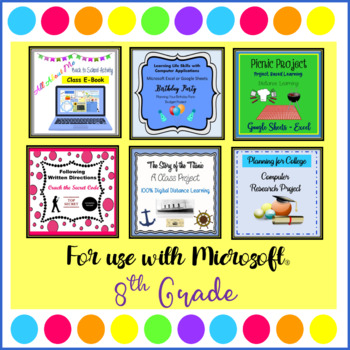Computer Technology Curriculum Complete Unit Microsoft Office Lessons 8th Grade
- Zip
Products in this Bundle (39)
showing 1-5 of 39 products
Bonus
Description
An entire year of WEEKLY Computer Technology Lessons & Activities for 8th Grade & Up. This bundle includes Computer Technology Lessons for Microsoft Office for a WEEKLY Computer Class or for classroom teachers wanting to teach Microsoft Office on a weekly basis.
Each lesson/activity is approximately 40 minutes allowing for a 5 minute teacher introduction.
Over 39 Weekly Lessons/Activities (a few lessons will take more than 1 class period to complete)
These lessons and activities were taught to 8th Graders. Please VIEW the lessons PRIOR to purchasing. If you have specific questions regarding the lessons and activities, please email me at provencomputerlessons@gmail.com
VERY IMPORTANT: SOME OF THE LESSONS WILL DOWNLOAD IN GOOGLE DOCS, SHEETS, OR SLIDES. YOU MUST HAVE A GMAIL ACCOUNT TO CONVERT THE FILES.
Lessons/Activities Include:
- Microsoft Word
- Microsoft Excel
- Microsoft PowerPoint
- Holiday Themed Lessons
- Digital Escape Rooms
- Grading Rubrics for Word, Excel and PowerPoint Lessons
- Keyboarding & Typing Drills & Games





